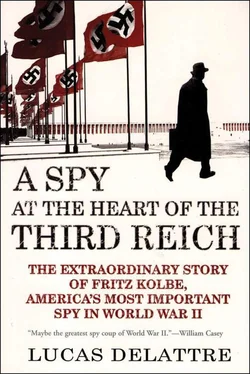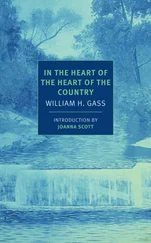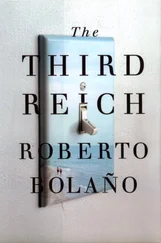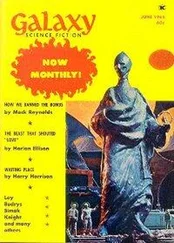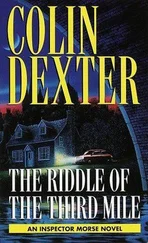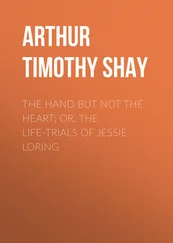7. Konrad-Adenauer-Stiftung, Sankt Augustin
Here can be found original documents concerning the life of Walter Bauer (1901–68), an industrialist who was a close friend of Fritz Kolbe.
8. Friedrich-Ebert-Stiftung, Bonn
This institution has a file of original documents concerning Paul Löbe (1875–1957), former president of the Reichstag and friend of Fritz Kolbe during the war. Documents on the history of the labor movement were also consulted (notably publications of the guild of saddle makers in Berlin from the early years of the twentieth century).
9. Various private and unpublished archives
In Berlin, Martin and Gudrun Fritsch recounted their memories of Fritz and allowed me to consult unpublished documents (notebooks, letters, photographs) having belonged to Maria Fritsch, Fritz Kolbe’s third wife and Martin Fritsch’s aunt.
In Geneva, Gérard and Sylvia Roth graciously allowed me to consult the notebooks of memoirs by Ernst Kocherthaler, their father and father-in-law, and told me some of their own memories.
In Strasbourg, Frank and Marie-Christine Jung, son and daughter-in-law of the surgeon Adolphe Jung, kindly allowed me to use a document written by him in Berlin during the war. It was a long diary full of very concrete observations on life in the capital of the Reich between 1942 and 1945. The original manuscript was transcribed and typed by Marie-Christine Jung.
It was not possible to consult the private archives of Ferdinand Sauerbruch, given by the family to the Prussian Cultural Foundation (Preussischer Kulturbesitz), which will not be open to the public until 2006 (as I was told by Tilman Sauerbruch, the surgeon’s grandson).
Personal Testimony
Witnesses are rare, as not many contemporaries of Fritz Kolbe are still alive.
Aside from the people already mentioned, these are the witnesses who were willing to talk to me:
Peter Sichel (New York/Bordeaux), head of the CIA post in Berlin (1949–52), then in charge of operations for all of Eastern Europe, and head of the Hong Kong office in the late 1950s. He knew Fritz Kolbe well between 1945 and 1955.
William Hood (Amagansett, NY), head of the CIA office in Bern during the 1960s. He frequently saw Fritz Kolbe in Bern.
Cordelia Dodson-Hood (Washington), worked with Allen Dulles in Bern at the end of the Second World War.
Tom Polgar (Maitland, FL), headed the CIA offices in Austria, Argentina, Vietnam, Mexico, and Germany. He knew Fritz Kolbe well in Berlin between 1947 and 1949.
Beth Montandon (Lausanne), worked for the CIA in Switzerland. She knew Fritz Kolbe well in Bern in the 1960s.
Erika von Hornstein (Berlin), painter and writer. She frequented Fritz Kolbe and Maria Fritsch in Berlin in the early postwar years.
Ronald Hermsdorf (New Hampshire), son of Harry Hermsdorf, CIA officer posted in Germany after the war, very close to Fritz Kolbe.
Gerald M. Mayer, Jr. (Newbury, NH), son of Gerald Mayer.
Articles
Fritz Kolbe has never been the subject of a book, but several magazine and newspaper articles have been published about him since the early 1950s:
Edward P. Morgan, “The Spy the Nazis Missed,” True, July 1950. Based on the direct testimony of Fritz Kolbe, interviewed in his home near Frankfurt. Translated into German in the Swiss weekly Die Weltwoche, a year later (July 1951). The article was also reprinted in Allen Dulles, ed., Great True Spy Stories (New York: Harper & Row, 1968).
Anthony Quibble, “Alias George Wood,” Studies in Intelligence (CIA publication), vol. 10 (Spring 1966). Internal OSS documents, previously unpublished, were used to write this groundbreaking article.
Articles by Hansjakob Stehle and Barbara Ungeheuer in Die Zeit, May 2, 1986. Hansjakob Stehle, then Rome correspondent for Die Zeit, interviewed Maria Fritsch, who showed him some original documents. Gerald Mayer and Gertrud von Heimerdinger were also questioned. The article was based essentially on OSS documents obtained in 1985 by an American Jesuit priest, Robert A. Graham. Some excerpts from these documents appeared in the Jesuit publication Civilta Cattolica before their publication in Die Zeit.
Mark Fritz, “The Perfect Spy,” Boston Globe, March 11, 2001. The journalist relied on declassified OSS documents and interviewed Peter Kolbe in Sydney.
Axel Frohn and Hans-Michael Kloth, “Der Bote aus Berlin,” Der Spiegel, September 2001. The two others relied on documents declassified in Washington and brought Fritz Kolbe out of the shadows for the first time since the articles in Die Zeit in 1986.
Greg Bradsher, “A Time to Act,” Prologue (journal of the NARA), Spring 2002. The author, an archivist in College Park, MD, made a thorough study of the recently declassified documents concerning Fritz Kolbe and compared them with various other OSS archives, about whose subtle complexities he is thoroughly knowledgeable.
Thematic Bibliography
The Second World War
Andreas-Friedrich, Ruth. Der Schattenmann. Tagebuchaufzeichnungen 1938–1948. Frankfurt, 2000.
Beevor, Antony. The Fall of Berlin. New York, 2002.
Dear, I. C. B. and M. R. D. Foot, eds. The Oxford Companion to World War II. Oxford, 1995.
Kageneck, August von. Examen de conscience. Paris, 1996.
Kardorff, Ursula von. Berliner Aufzeichnungen. 1942 bis 1945. Munich, 1997.
Laqueur, Walter and Richard Breitman. Breaking the Silence. New York, 1986.
Read, Anthony and David Fisher. The Fall of Berlin. London, 1999.
Nationalism and the Third Reich
Bedürftig, Friedemann and Christian Zentner. Das Grosse Lexikon des Dritten Reiches. Munich, 1985.
Burleigh, Michael. The Third Reich: A New History. New York, 2000.
Cookridge, Edward Henry. Gehlen: The Spy of the Century. London, 1971.
Focke, Harald and Uwe Reimer. Alltag unterm Hakenkreuz. Hamburg, 1999.
Haffner, Sebastian. Anmerkungen zu Hitler. Berlin, 1978.
Heims, Heinrich. Monologe im Führerhauptquartier, 1941–1944. Hamburg, 1980.
Johnson, Eric A. Nazi Terror: The Gestapo, Jews and Ordinary Germans. New York, 1999.
Junge, Traudl, in collaboration with Melissa Müller. Bis zur letzten Stunde. Hitlers Sekretärin erzählt ihr Leben. Munich, 2002.
Kahn, David. Hitler’s Spies: German Military Intelligence in World War II. London, 1978.
Kershaw, Ian. The “Hitler Myth”: Image and Reality in the Third Reich. New York, 1987.
———. The Nazi Dictatorship: Problems and Perspectives of Interpretation. New York, 1989.
Klemperer, Victor. The Language of the Third Reich: LII: Lingua Tertii Imperii, tr. Martin Brady. London, 2000.
Neumann Franz. Behemoth: The Structure and Practice of National Socialism. London, 1942.
Schellenberg, Walter. The Labyrinth: Memoirs, tr. Louis Hagen. New York, 1956.
Shirer, William L. Berlin Diary: The Journal of a Foreign Correspondent 1934–1941. New York, 1941.
Smelser, Ronald, Enrico Syring, and Rainer Zittelmann, eds. Die braune Elite, vol. 2. Darmstadt, 1993.
Wistrich, Robert. Who’s Who in Nazi Germany. New York, 1982.
Diplomacy, German Foreign Ministry
100 Jahre Auswärtiges Amt 1870–1970. Published by the German Foreign Ministry. Bonn, 1970.
Akten zur deutschen auswärtigen Politik, 1918–1945. Aus dem Archiv des Auswärtigen Amts.
Göttingen, 1969–79.
Bloch, Michael. Ribbentrop. New York, 1993.
Browning, Christopher. The Final Solution and the German Foreign Office. New York, 1978.
Читать дальше
